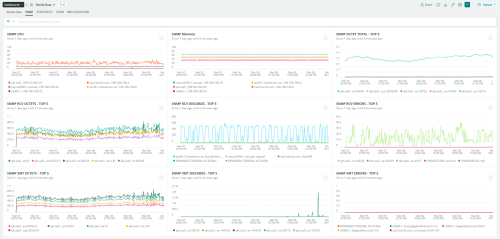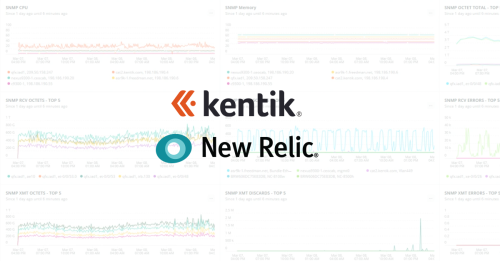Network Observability Can Enable Hybrid Multi-Cloud Network Operations


Summary
Network observability is a concise way to describe how NPM solutions are evolving to support IT organizations that are embracing DevOps and the cloud. In this post, EMA Analyst Shamus McGillicuddy takes a deeper dive into network observability.
Network operations teams that are struggling to align with a DevOps-centric, multi-cloud future should investigate how the concept of network observability can help them.
NetOps professionals will find that many of their vendor partners are starting to talk about network observability as an evolution and advancement beyond traditional network performance management.
DevOps devotees are familiar with the term “observability.” They will tell you it refers to the ability to collect, aggregate and analyze metrics, logs and traces to understand the health and performance of applications that are distributed across multiple clouds and data centers. NetOps teams that are collaborating with DevOps will find that their own tooling requirements are moving in a similar direction.
Defining Network Observability
What is network observability? First, think of it as the convergence of network performance management and application performance management. In a 2019 survey of NetOps pros, EMA found that 28% had integrated their NPM tools with their company’s APM tools. This convergence isn’t necessarily new. NPM vendors and APM vendors were talking about this convergence a decade ago. Many NPM vendors started trying to differentiate their products by rebranding them as application-aware network performance management. One can think of network observability as a mature approach to this convergence. For example, Kentik has integrated its NPM solution with APM leader New Relic. This allows DevOps and NetOps teams to correlate performance across network infrastructure and applications.
But network observability also involves the evolution and expansion of NPM solutions. For instance, NPM has long focused on analyzing device metrics and traffic. However, many NPM vendors are expanding them to address critical blind spots. Active monitoring via synthetic traffic is a great example. Synthetic traffic can reveal network and application performance in places where passive traffic monitoring isn’t possible or practical. For example, an active tool can send synthetic flows to a SaaS application to measure reachability and availability of the application. Active monitoring can expand the visibility and intelligence of a traditional NPM solution, advancing it toward true network observability.
Network observability is also a marketing term that can be helpful to NetOps teams. DevOps professionals are familiar with the concept of observability. Armed with a network observability solution, NetOps can bridge the gaps that exist between them and DevOps and start to talk about building a unified toolset for network and application operations. This gap in understanding is a real problem that exists in many enterprises. A network architect with a large retailer once told me: “Part of the challenge has been political. The cloud team isn’t interested in paying for anything else. They want to use cloud-native tools, and they’re not concerned about IT operations. They’re engineering-focused.”
Are You Ready for Network Observability?
Network observability is not for every company. EMA speaks to plenty of NetOps managers who say their area of responsibility doesn’t rise past Layer 4 on the OSI stack. For instance, a network engineer for a large government agency once told me: “We asked ourselves as a network team, are we in the business of troubleshooting application transactions and sessions, or do we terminate our responsibility at the TCP layer? We decided that as long as the TCP handshake is done in a reasonable timeframe, then we are done. Everything else is an application issue. That has to do with how our IT organization works.”
If your IT organization takes this siloed view of operations, perhaps network observability isn’t relevant to you. On the other hand, maybe you see DevOps and hybrid multi-cloud lurking on the horizon, and you know that things need to change. If that’s the case, study up on what network observability can do.
Other NetOps teams will quickly recognize the value of a network observability solution that provides unified insight into application and network performance. As a director of network operations at a large financial services company said: “My mindset is, I don’t manage the network. I manage the applications that run on it. I need to look down the stack into the network itself. We take a top-down approach, rather than a bottom-up approach. When I have a network with 4,000 ports going down, I don’t care about them unless there is traffic running on them. If something is broken but not affecting anything, it’s not important.”
This operations director would see the value of a solution that can correlate application performance and network performance. In such an organization, network observability is a potential path toward operational excellence.
Network observability is a concise way to describe how NPM solutions are evolving to support IT organizations that are embracing DevOps and the cloud. If you have a requirement to support such a transition, ask your vendors to share their vision of how they are aligning with this concept.


